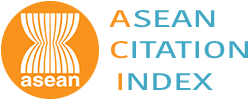Land Suitability Evaluation of Cocoa (Theobroma cacao L.) Production Areas in Davao City, Philippines
DOI:
https://doi.org/10.61310/mjst.v22i1.1952Keywords:
current suitability, environmental lapse rate, intensification, land evaluation, production constraintsAbstract
With the growing demand for cocoa, local farmers and other key players of the cocoa industry were encouraged to boost production to secure supply. However, after many decades of cocoa production, soil fertility and available cultivation areas are shrinking. Land suitability evaluation was conducted in areas grown with cocoa in Davao City, Philippines to determine the current suitability and soil-related constraints for cocoa production intensification and expansion. Using the environmental lapse rate, temperature of the area was determined and suitability were evaluated using Food and Agriculture Organization framework with the aid of QGIS software. Based on the result, six soil series were identified as suitable for cocoa. These included the Cabantian, Bolinao (Inayangan), Bolinao (Paquibato), Miral, Tugbok and undifferentiated soil. Cabantian, Miral and Bolinao (Inayangan) were moderately suitable with limitations in slope and soil fertility. Bolinao (Paquibato) was moderately suitable with limitations in soil depth and sloping topography. Tugbok was marginally suitable due to low soil fertility and slight limitation in slope. Undifferentiated soil was moderately suitable with sloping topography, shallow depth and soil fertility constraints. The six suitable soil series had moderate to marginal limitations. The constraints to cocoa production are manageable to some extent.










